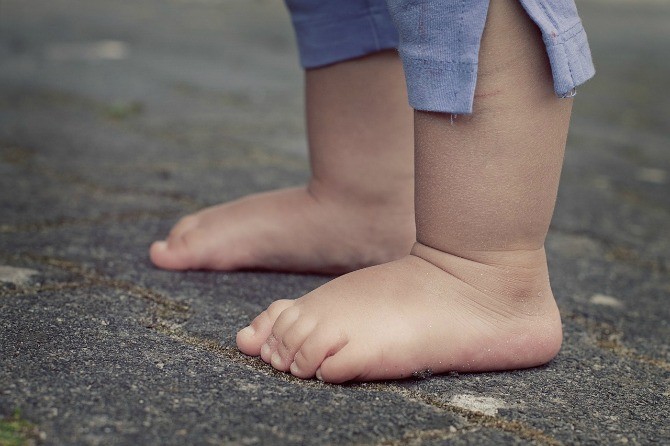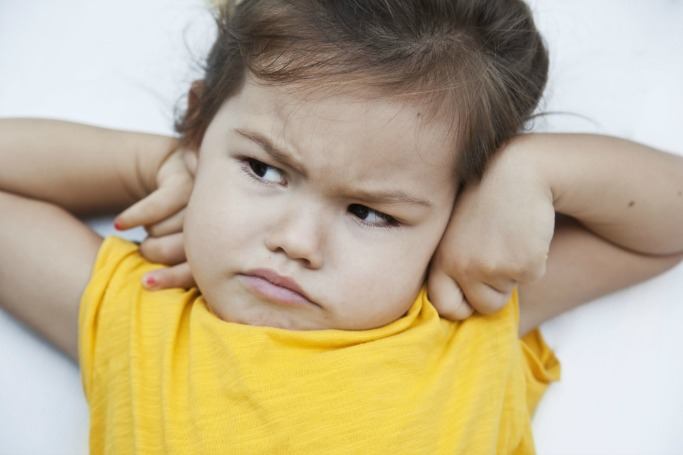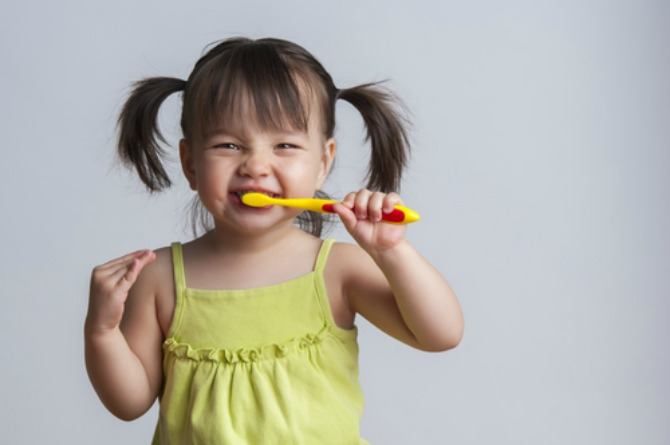Toddler development at 13 months is all about communication! Pointing at desired objects is a common starting point. But as soon as you respond, your little one will discover a thousand ways to make his wishes known.
He might stretch out his arms and bounce up and down to be carried, or plonk himself down next to his high chair if he thinks it’s dinner time. He might even initiate games with you, or bring you his favorite book to read.
This is the time when baby sign language really comes into its own, because your child finally understands that he can influence his mommy’s actions!
No need to worry if you haven’t done any sign language so far–you and your toddler will soon be fluent in a sign language that’s uniquely your own.
Patience is still a long way off, so a less than perfect response might trigger a frustrated wail. Your toddler is developing a mind of his own and is not shy to tell you! Don’t worry, all this is part of your little one’s developmental journey. Keep trying, and soon you two will know exactly what the other is ‘talking’ about.
Continue reading to learn more about toddler development at 13 months. Next up is Physical Development
Physical Development
Cruising, crawling, walking, climbing; your toddler is all about movement. Whether he is standing on his own, or climbing low steps, or even walking, you need eyes in the back of your head. And preferably around corners too!
All this walking and moving means very little patience for sitting down and none at all for staying put! Your little one does not want to be confined in a stroller or a play pen. Of course, sometimes he has no choice.
Be strong mama! While your toddler has to endure the stroller, you have to endure his loudly voiced protest–it’s all part of the wonderful world of toddler development!
Depth perception is still developing. Standing up means a completely different angle from which to view the world, and your toddler is still adjusting! This means your toddler does not yet accurately estimate height and distance.
As a result your toddler might appear very klutzy. Some research claims the average toddler falls 38 times a day! But don’t worry–nature has provided a toddler with very flexible bones.
As he grows older, his bones will grow stronger and straighter, but right now, those flexible little bow-legs make sure that he’ll be fine even after a few tumbles.

The bones in your baby’s feet are not strong yet. Avoid putting sturdy shoes; doing so may cause his growing feet to take the shape of the shoes.
It’s not just the bones in the legs that are still developing their final shape. The bones in his feet too are not set yet. So until your child has been walking for a few weeks or even months, don’t put sturdy shoes on him. This might cause his feet to grow to the shape of the shoes instead of their natural shape needed for walking.
A few more developments you might notice: your previously placid baby is starting to throw things! You wonder: how on Earth can such a small human being create such a huge mess? It’s all part of toddler development! He is learning–specifically discovering opening, closing, taking out, putting away, and throwing.
You can guide this journey by letting your toddler help you out. He’s looking at you to show him how to act. Let him imitate you, from blowing kisses to putting things away in boxes (and then put the boxes away, before he can open them again!)
Continue reading to learn more about toddler development at 13 months. Next up is Cognitive, Social and Emotional Development
Cognitive Development
Your toddler is discovering cause and effect. If he drops his pacifier, mommy will scoop it up. So he drops it again, and again! He loves this newfound sense of control over his environment, even if you don’t find it nearly as much fun the tenth or twentieth time around.
But probably you will enjoy another example of the newly discovered cause-and-effect cycle: communication. Your toddler has discovered he can make you do things! Imitating, pointing, protesting. So be prepared for an avalanche of communication.
Unlike a baby, your toddler expects an answer. If he can’t make you understand him, he will show his frustration. Take notice of his actions. Your toddler is not wandering around aimlessly, usually he has a specific goal in mind (one that you might not always agree with!).
Social and Emotional Development
Inside your toddler’s head, he knows exactly what he wants and where he wants to go. But the world just doesn’t understand him! His brain is developing so fast, his body has a hard time to keep up with it.
And since patience is not yet one of his virtues, you will most likely see the first signs of stubbornness and frustration.
Your loving and adorable little one will start showing a wider array of emotions, including some of the less lovely kind. As he grows, he will start to display preferences, like playing instead of eating. Diaper changes might become a battle as he refuses to lie down.
This can be hard if you have a strong-willed child. Some children appear endlessly defiant. Remember that he has only recently discovered cause and effect in the physical world. He is trying to understand the world around him, and looks to you for guidance – even if it sometimes feels more like restraining!

Just having learned caused and effect, your toddler may seem defiant. Because she knows you will react a certain way if she wails, she may do this if she doesn’t fee like taking a nap when she should.
Mommy and daddy are still the centre of your toddlers’ world, but part of toddler development is discovering other people as well. He might begin to take an interest in other children, and even start to make eye contact with friends.
Your little one is beginning to adjust his behaviour to the people he is around, such as smiling at mommy and frowning at (relative) strangers.
A good game for this age group is hide-and-seek. Your toddler is now discovering object permanence, meaning he understands that if he saw an object before, it is still there after you have covered it.
This game will also help toddlers who have separation anxiety. Hide-and-seek shows them mommy and daddy are still there, even if he can’t see you.
If you do have to say goodbye to your little one, don’t prolong it. Even though it breaks your heart to hear him sobbing, staying around an extra five minutes only makes it harder on both of you.
Show him a smiling face (remember, he imitates you!) and if you really can’t bear it, ask the caregiver to send you a smiley picture of him after you’ve left. Even though they might cry like the world’s ending, children are usually happy again within a few minutes of the parents leaving!
Continue reading to learn more about toddler development at 13 months. Next up is Speech, Language, and Health and Nutrition.
Speech and Language Development
Your toddler’s first language is still body language. If you have been practicing sign language, it will probably speed up around this time.
Your little trooper is learning new names of things and objects every day. He is beginning to understand the link between the signs you make and the objects the signs refer to. His passive vocabulary is growing rapidly.
This passive vocabulary might even begin to translate into actual words! Some children say their first recognizable word (or two) around this age. But don’t worry if your child is content with pointing.
Speech is governed by small and precise muscle movement which take a while to master. Right now, most of the attention is focused on getting the big muscle movements right, such as walking!
Health and Nutrition
As your toddler’s fine motor skills develop, you can begin to teach him to drink from a cup and wean him off the bottle. Drinking from bottles, especially if filled with sugary drink or milk, might contribute to early childhood tooth decay.

Part of growing up is having sips of sugary drinks–they are delicious, after all! Just be sure to moderate your child’s intake and have her regularly brush her teeth.
As he is discovering his own influence over the world, dinner time may become more difficult. Food is one of the few areas over which a toddler has control of, and many toddlers turn into picky eaters as a result.
Other ways in which he might test his boundaries are food throwing and attempts at self-feeding. Don’t worry too much, and try and keep your cool in the midst of the mess. All of this is a normal part of toddler development and parenting.
Continue reading to learn more about toddler development at 12 months. Next up are our tips for parents
Tips for Parents
It’s time to baby proof the house if you haven’t done so yet! With an active and inquisitive toddler on the prowl, you need to make double sure that all electricity sockets and glass items are covered or removed.
All children develop at their own pace. Some take their first steps at 10 months old, some prefer to wait until 16 months. Some toddlers smile at every passer-by, other toddlers save their smiles for very special moments.
None of this is any indication for their future development or education. It is often said that Einstein did not begin speaking until three years old! Have a look at our articles on toddler development at 12, 18 and 24 months to find out more about early warning signals. But if you are concerned, make sure to consult your pediatrician.
Your toddler’s previous month: 12 months
Your toddler’s next month: 14 months
Republished with permission from: theAsianparent
Do you have questions on this toddler development guide? Share with us in the comments!
Like us on Facebook and follow us on Google+ to stay up-to-date on the latest from theAsianparent.com Philippines!